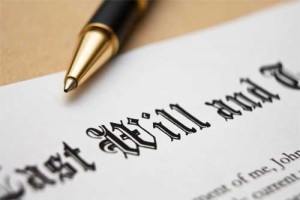
Julie Jason, a personal money manager and financial writer whose columns are syndicated, offers suggestions for couples to help them assure that their estate plan coordinates with their financial plan.
Start With An Audit
Included in her advice: Start with an audit of your particular situation. Don’t rely on memory. Gather relevant documents and organize them in a binder. Include wills, trusts and powers of attorney. Have copies of all beneficiary designations on tax-deferred accounts and annuities.
Check Beneficiaries’ Information
Document life insurance policies, along with beneficiaries to whom benefits are payable. Provide the same documentation for all real estate you own and review how the property is titled. Check your state laws to see if they allow you to designate a beneficiary on the deed to transfer the property on your death.
List All Bank Accounts And Investment Accounts
Have copies of bank and brokerage accounts, including Treasury bonds purchased through a bank. Don’t overlook mutual funds and annuity statements. Check to see if any of the accounts contain provisions to “transfer on death” or “payable on death” or “in trust for.”
Make copies of stock certificates. Often, on death of the owners, those who inherit don’t know where the original certificates are located. Again, check for the above notations that would determine how the stocks are to be assigned.
If you are a business owner, have copies of stock certificates if you are organized as a corporation. If it is a partnership, copies of the operating agreement are necessary. Also include titles to vehicles. And check to see if your state is one that allows you to pass the title to a beneficiary without going through probate.
Valuable Art And Collectibles Need Proof Of Purchase
Proof of purchase of art and collectible items should be in your record and copies of your most recent tax returns also should be in the folder. A current list of all liabilities, including outstanding debt and mortgages on real estate, is necessary. Also list all safety deposit boxes you use.
When all the relevant information is gathered into one place, go through it and note whether items are owned by the husband or wife or jointly. Prepare lists based on ownership. A spreadsheet is useful for organizing the information. Add information showing how you intend items to be dispersed in the event of the passing of either partner.
This kind of joint organization will spare heirs and legal advisors a lot of headaches when death occurs.


